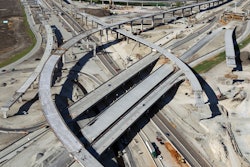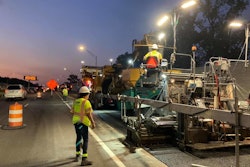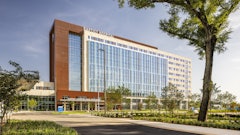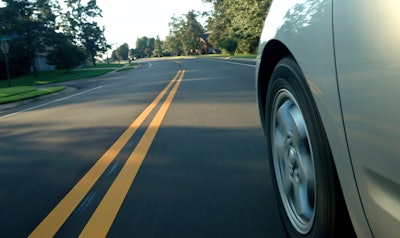
A recent report, Transportation Impacts and Implications of COVID-19, released by TRIP (A National Transportation Research Nonprofit), explores the impacts of the coronavirus pandemic had on the transportation system, including changes in personal and commercial mobility.
While the future transportation patterns and needs of a post-pandemic environment will take several years to fully emerge, a review of the initial impact of COVID19 on the nation’s mobility patterns is helpful in gaining insights to the future of U.S. transportation and in determining appropriate future transportation policies.
Initial Impact
U.S. vehicle miles of travel (VMT) bottomed out in April 2020 at a level 40 percent below that in April 2019, by March 2021, VMT had rebounded to just three percent below March 2019 levels (the most recent March not impacted by the COVID-19 pandemic).  Federal Highway Administration | From TRIP Report
Federal Highway Administration | From TRIP Report
Many Americans were staying home, working remote, shopping online - with that came an initial significant decrease in the average number of daily trips and VMT. But, signs of recovery were evident by early Spring 2021.
Data provided by the Bureau of Transportation Statistics also indicate that the total number of daily trips, ( defined as a trip that included at least one-destination that resulted in a stop of at least 10 minutes) declined by 38% between April 2019 - April 2020. By March 2021, the total number of daily trips had rebounded to only 12% below the number of daily trips taken in April 2019.
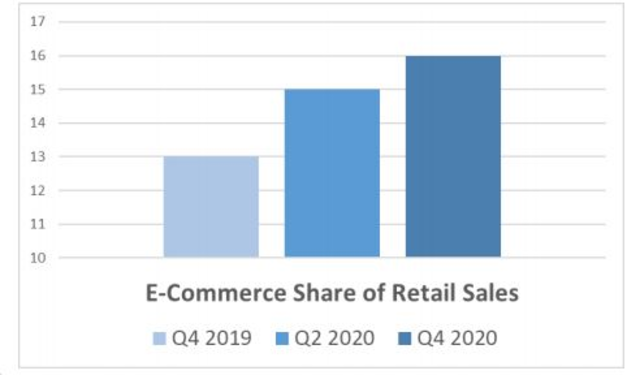 U.S. Census Bureau | From TRIP Report
U.S. Census Bureau | From TRIP Report
When all of us were staying home from school and work during the pandemic, there was an increase of online, e-commerce shopping.
The use of e-commerce, largely for home deliveries, has continued to increase during the pandemic. During the last quarter of 2019, e-commerce’s share of U.S. retail sales was 13%. E-commerce’s share of U.S. retail sales increased to 15% by the second quarter of 2020 and reached 16% by the fourth quarter of 2020, double the 8% share in 2015.
Traffic Congestion and Patterns
Results of the COVID-19 pandemic, weekday traffic congestion patterns have been flattened. By early Spring 2021, evening rush hours had largely returned to pre-pandemic levels, while morning rush hours continue to be reduced from pre-pandemic levels and traffic volumes during mid-day remain higher than before the pandemic. In April 2021, 45 out of 100 large U.S. metro areas had reached or exceeded the pre-pandemic level of trips during the evening rush hour period.
In addition to altering commuting patterns, the likelihood that remote work will continue to untether a significant share of workers is also anticipated to result in a significant migration of Americans who, given greater geographic freedom, will tend to move from areas with higher density and housing costs to areas with lower density and housing costs.
Future Transportation Policies
Critical investments are needed to our nation's roads, highways and bridges. Surface transportation is currently a hot topic in Washington as many elected officials are trying to reach a bipartisan agreement on the amount of money to support these programs.
The TRIP report finds that transportation policy post-pandemic will need to be flexible to reflect emerging trends. Post-pandemic factors that are likely to impact U.S. travel patterns include reductions in commuting, business travel, and in-person meetings; increased use of e-commerce and tele-medicine; and evolving preferences for travel modes due to relative changes in the competitive attributes of travel options, such as increased auto use due to increased highway reliability or additional parking availability.
“While future transportation trends in a post-COVID-19 world will likely take several years to fully emerge, we already see that vehicle travel is almost back to pre-pandemic levels – it is already higher in 15 states,” said Dave Kearby, TRIP’s executive director. “Meeting the nation’s post-COVID-19 mobility needs will require that increased federal and state transportation funding provide state and local governments the flexibility to determine how best to improve their transportation system.”







